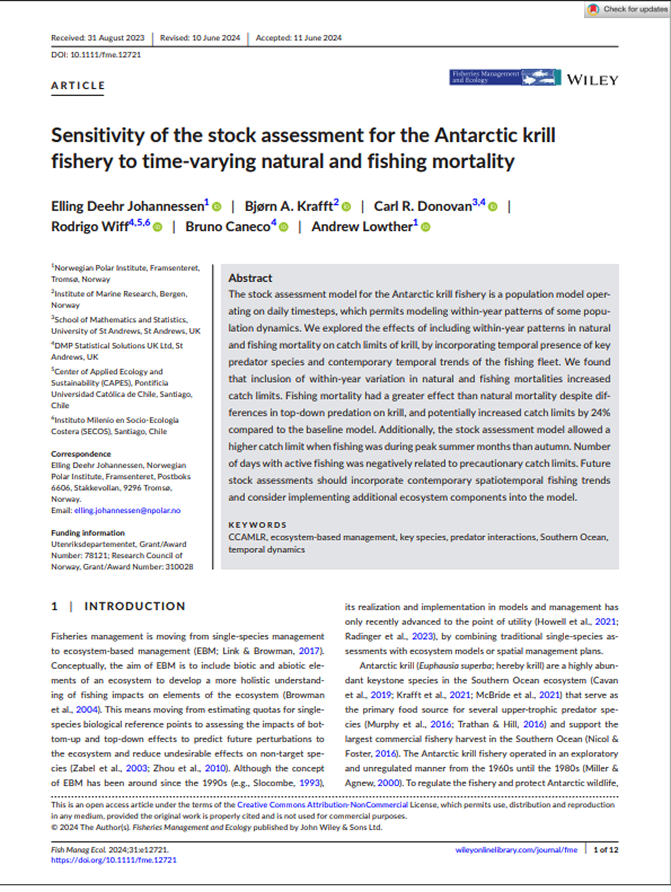Antarctic ecosystem
Krill (Euphausia superba)
Occurrence and Distribution of Fin Whales (Balaenoptera physalus) and Humpback Whales (Megaptera novaeangliae) in the Atlantic Sector of Antarctica
Summary
Visual observations from the research vessel Akademik Mstislav Keldysh during January-February 2022 revealed distinct habitat preferences between fin and humpback whales in the Atlantic Antarctic region. Fin whales showed highest numbers (up to 2.33 individuals per kilometer) in deep waters of Powell Basin and Orkney Trench where large adult krill were most abundant (up to 315 grams per 1000 cubic meters). Humpback whales preferred shallow areas like Bransfield Strait with high concentrations of young krill (31-73 grams per 1000 cubic meters). Total observation time was 423 hours covering 3,594 kilometers of survey track. Whale distribution patterns matched krill age structure and water depth but showed no significant relationship with ocean productivity levels measured by chlorophyll concentrations. The study confirms that these whale species occupy different ecological niches based on their prey preferences and preferred water depths.

1
Map showing whale and dolphin observation areas and sighting locations in the Atlantic sector of Antarctica during January-February 2022: (1) Bransfield Strait; (2) Antarctic Strait; (3) Weddell Sea; (4) Powell Basin; (5) Orkney Shelf; (6) Orkney Trench; (7) Scotia Sea.Key Findings
1
Fin whales concentrated in deep waters (Powell Basin, Orkney Trench) where adult krill reached concentrations up to 315 grams per 1000 cubic meters. 2
Humpback whales were most common in shallow Bransfield Strait areas with young krill concentrations of 31-73 grams per 1000 cubic meters. 3
Clear depth-based habitat separation occurred, with fin whales preferring deep open ocean waters and humpback whales favoring shallow continental shelf areas. 4
No relationship was found between whale presence and ocean productivity levels measured by chlorophyll concentrations. 5
A total of 13 whale and dolphin species were recorded across 472 sightings involving 966 individual animals. 6
Fin whales made up 51.7% of all sightings, while humpback whales comprised 30.1%.

